Pledge Trees.
Start your tree pledge today
Every tree pledged helps alleviate poverty and hunger for families, foster biodiversity, and support wildlife in Commonwealth countries across Africa. Driven by our dedicated community of monthly supporters, this initiative creates a lasting impact. You can contribute by donating monthly, joining our supporter network, or starting a tree pledge page with a unique link to inspire more pledges. Each year, we celebrate our community’s efforts through our Ethical Awards—so your impact could even earn you recognition. Together, we’re growing a more sustainable future for people, the planet, and animals.
Pledge Trees
You can pledge trees individually below or create your own Tree Pledge Page to make pledges and inspire more support by sharing your unique page link with your clients or communities.

Your 'Tree Pledge Certification' will be available through the order confirmation email.

- Certified Verra CCB Standard
- 0.057kg tCO2 sequestered per tree
- Local food security that eliminates the need for high CO2 emissions associated with imports
- Watershed management that prevents flooding
- No chemical fertiliser use, reducing algae blooms
- Biodiversity loss prevention, as farmers to grow what they need instead of mining it from the forest
- Building up soil carbon by planting an average of 2,500 trees in each 1 acre plot
- Using compost with integrated pest management, eliminates the use of any pesticides
"Your Tree Pledge Uplifts African Families, Reduces Poverty, and Restores Biodiversity."
Trees are a great for gifting with a purpose
Choose your digital gift card. After the purchase, you will receive an email with the gift card and instructions on how to use it. The card can be used as payment for any products or services we have
Access your tree pledge files
Download your 'Tree Pledge Certification' and access our approved media files to showcase your commitment.
Create your NetZero Pathway
Is your personal or company carbon footprint above or below the UK’s annual average?
From small trees to mighty forest gardens
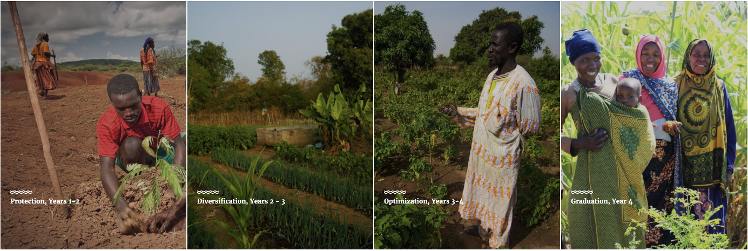
Using agroforestry to empower smallholder farmers to plant pathways out of poverty and hunger. Trees sequester carbon, revitalise land, and benefit the farmers planting them. The Forest Garden Program is a simple, replicable, and scalable approach with proven success.
Through the 4 year training program, called the Forest Garden Approach, farmers plant thousands of trees that protect and bring nutrients back to the soil. This helps farmers grow a variety of fruits and vegetables. Forest Garden farmers gain increases in income and access to food, even in the first year, all while improving the environment.
The 5 step forest garden approach

1
We identify ~200 farming families in need, select training technicians, and prepare materials for launch.
2
Farmers plant ~2,500 fast-growing trees and bushes that create a protective and stabilising barrier.
3
Farmers learn to diversify their field with a vegetable and fruit tree portfolio to meet the family’s priority nutritional and selling needs.
4
Farmers learn about advanced Forest Garden management and conservation to optimise the long-term health and productivity of the land.
5
We implement a sustainability strategy for the future with each farmer. A graduation ceremony is held to celebrate the farmers’ program completion.
Which trees are planted in the forest gardens?
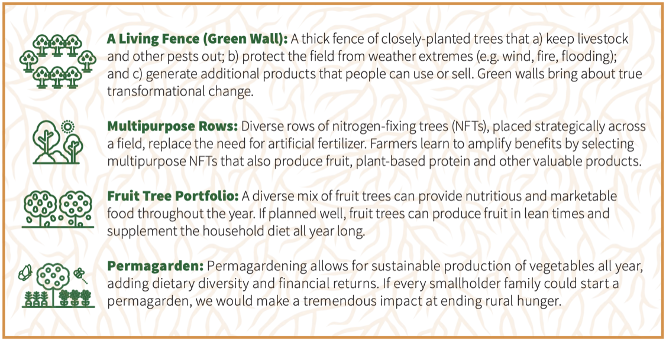
Our FAQ's...
Why is deforestation such a timely issue?
Deforestation is a not a problem of the future, we are on target to cause a catastrophic worldwide shortage of fresh water and food. At the current rate, 10% of our original forests will remain by 2030. Reforestation is our pledge to reduce global warming and help save our planet today.
We plant trees for the future, supporting thousands of farming families and changing lives for good, focusing across five countries in Sub-Saharan Africa. With Cameroon, Kenya, Senegal, Uganda, and Tanzania being the areas having the biggest impact and seeing profound results.
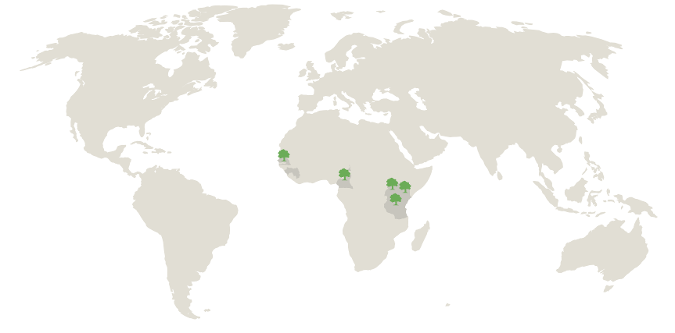
Why do we plant trees in Africa?
Cameroon is a Central African country located on the Gulf of Guinea with a great diversity of people, landscapes, and wildlife. The majority of the northern 1/3 is comprised of semi-arid Sahelian savanna experiencing continued deforestation and desertification. The area is marked mostly by pastoral communities living off continuously marginalised and depleted soils and subsistence livestock production. As these lands continue to be overgrazed and over-harvested, desertification threatens to spread further southward and food security becomes a serious challenge. The West and Northwest regions are mountainous forested areas where tree harvesting and production dovetails with traditional agriculture practices. However, both activities have had destructive implications for the area’s burgeoning biodiversity, and the significant stock of forestry trees has fuelled dramatic deforestation. Combined with sloping elevation, clear-cutting of forests for agricultural and timber exploitation has contributed to mass wasting of nutrient-rich top soils and fertility degradation, furthermore leading to diminished ground and potable water quality.
Agriculture dominates Kenya’s economy. 15–17% of Kenya’s total land area has sufficient fertility and rainfall to be farmed. The Kenyan government is currently working with public and private stakeholders to reach their target of 10% tree cover for the country – a large increase from the current 6.2%. Critical in meeting this goal is agroforestry. Our Forest Garden Projects will not only contribute to this massive landscape initiative, but help smallholder farming families improve sustainable farming practices and increase their food security. We are currently working in two counties in Kenya, Homa Bay County, bordering Lake Victoria and Kiambu County, north Nairobi.
Senegal is the largest international hub and economic centre in West Africa, but much of its population lives in rural farming communities on less than $1 a day. According to 2012 data from the UN World Food Program 2012, Senegal is chronically vulnerable to natural disasters (particularly drought and flooding), its agricultural sector has declined over time, it imports about 46% of its food requirements, its ground water tables is falling 20 feet per years in many places, and it is vulnerable to food price spikes.
Since independence, Uganda has experienced great change and turmoil. Its citizens have weathered volatile regimes and violent conflict from those seeking power. Starting in the mid-1990s Joseph Kony and his Lord’s Resistance Army began to sweep through villages in the Northern region of the country, displacing millions of largely smallholder farmers. Today, most farming families affected by this conflict have returned to their land, but much productivity and knowledge of appropriate farming methods has been lost. Our Forest Garden projects in this region provide much-needed training on how to maximise yields of diverse food and cash crops in a sustainable manner that will help farmers to retain soil nutrients and water resources.
Tanzania is a large country with a vast array of climates and natural resources. With an annual output of about 90,000 tons of Sunflower seed oil, Tanzania is one of the top ten sunflower oilseed producers in the world. One area of our current Forest Garden projects lies in the sunflower belt of central Tanzania in the Singida region. Tanzania is also the top third tobacco producer in Africa. The second area of our Forest Garden projects lies to the east in the Tabora region. Most of our participant farmers in these semi-arid environment make money solely from sunflowers and tobacco resulting in a lack of diversity in food and cash crops and leading to increased deforestation.
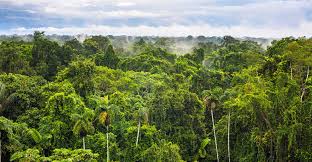
How are the trees certified?
The trees are currently being assessed for the Verified Carbon Standard (VCS) and Community Climate Benefits (CCB) certifications. These will more accurately account for CO2 sequestration in our projects based on tree species and climate conditions. There is a rigorous process for obtaining these certifications and they are climate and species-specific. To start, we will be conducting the verifications in Senegal and Kenya.
Understanding the Process
Trees and plants take in carbon dioxide (CO2) and use it during photosynthesis to store carbon (C) and release oxygen (O2). In this way, trees are able to store carbon (C) over a long period of time while producing oxygen (O2) for us to breathe. The scientific community talks about this process in terms of carbon stored in the tree or ecosystem. But when people talk about offsetting it is expressed as the CO2 equivalent (how much CO2 is taken in by trees to offset emissions). This document uses two independent studies that measure the carbon storage potential of Forest Gardens to calculate the CO2 equivalent for offsetting.
Size of a Forest Garden
The average Forest Garden is 1 acre in size. One farmer, or one farming family, cares for each Forest Garden on their own land. The Michigan State Report is based on a hectare because, at the time, that was the average size of a Forest Garden. As we have been able to serve more communities across various landscapes, the average size of a Forest Garden is now an acre. We have factored this into the calculation above.
Trees in a Forest Garden
The average Forest Garden has 2,500 trees. Most of these trees are planted in the first and second year in the parameter of the Forest Garden (we call this the “living fence”). In the third and fourth years, the rest of the trees are strategically planned and placed where it will be most beneficial to the farmer’s Forest Garden. The tree planting pledges received account for forest garden seeds, biodegradable nursery bags for seedlings, basic tree planting tools (wheelbarrow, shovel, hoe, watering can and pruning shears), and training from field staff.
Additional Forest Garden Benefits
● Local food security that eliminates the need for high CO2 emissions associated with imports
● Watershed management that prevents flooding
● No chemical fertiliser use, preventing high CO2 emissions associated with the production of chemical fertiliser and eliminating runoff that causes algae blooms in water and releases methane.
● Prevents further deforestation and biodiversity loss by allowing farmers to grow what they need instead of mining it from the forest
● Planting trees in a Forest Garden with compost and integrated pest management eliminates the use of fertilisers and pesticides thus building up soil carbon
CO2-emissions are NOT going down
Global emissions of carbon dioxide have increased constantly since around 1800. Then between 2014 and 2016, global CO2-emissions were mainly unchanged giving hope that emissions were on the way to be reduced. But then emissions began to rise again in 2017 as well as in 2018 and 2019. In 2018, CO2-emissions grew faster than at any time since 2010-11. So just to be clear: Despite all the good intentions and the signing of the Paris Agreement in 2016 with the purpose of reducing CO2-emissions, emissions are still going up. The Paris Agreement aims to keep the rise of global temperatures to 2 degrees celsius in this century - or, if possible, to 1.5 degrees. This will require huge changes. With current policies we are heading for a 3.7 degree Celsius increase by 2100.
How much CO2 does a Forest Garden Offset?
On average, a Forest Garden offsets 144.64 metric tons of carbon dioxide (CO2) per acre over 20 years.
Remember, CO2 is a molecule made up of two different atoms (Carbon and Oxygen). The atomic weight of carbon is 12. The atomic weight of oxygen in 16. Therefore the atomic weight of Carbon Dioxide (CO2) is added up as: 12+16+16 = 44.
So, to convert a carbon storage value to the CO2 equivalent you must multiply carbon stored times the ratio of CO2 to Carbon, which equals 44/12 = 3.67 (This ratio is used to convert carbon to CO2).
A preliminary study on the Forest Gardens was developed by Michigan State University Department of Forestry. In this study, all trees in Forest Gardens use an estimated carbon storage calculation or CO2 sequestered per hectare of Forest Garden. In addition, we now account for the average carbon storage estimate of soil provided by the Intergovernmental Panel on Climate Change (IPCC). We have added these adjustments to our calculation:
● Forest Gardens sequester 62.8 metric tonnes (t) of carbon/ha over a 20 year lifetime.
● Convert this to acres: 62.8/2.4 acre/ha = 26.17 metric tons of carbon/acre.
● Convert this from carbon to CO2: 26.17 *3.67 = 96.04 metric tons of CO2/acre over 20 years.
● Add in soil carbon dioxide storage estimates: 2.43 metric tons of C02/acre/year*1.
● If we use a 20 year calculation we would have: 96.04 metric tons of carbon +(2.43 metric tons of C02/acre/year *20 years) = 144.64 metric tons of CO2/acre over 20 years.
● Therefore, on average, a Forest Garden offsets 144.64 metric tons of carbon dioxide (CO2) per acre over 20 years.
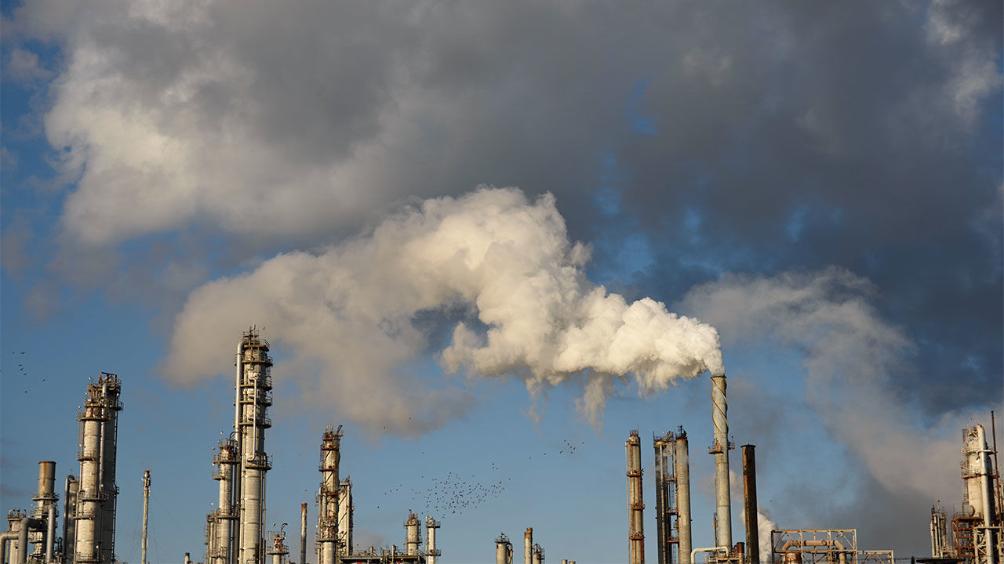
How much do we need to reduce CO2-emissions?
How big reductions in CO2-emissions are needed to limit the rise in global temperatures? According to the UN Environment Programme, emissions must fall by 25% before 2030 to keep increases within 2 degrees by 2100. 55% reductions before 2030 are needed to limit the increase to 1.5 degrees.
The main CO2-emitting sectors:
Electricity and heat production: 49.0%
Transport: 20.5%
Manufacturing & construction industries: 20.0%
Other sectors: 10.5%
The Greenhouse effect
Greenhouse gas emissions could increase from 55 gigatons of CO2 equivalents (GtCO2e) in 2019 to over 80 GtCO2e in 2050 - an almost 50 percent increase. A greenhouse gas is capable of absorbing infrared radiation, thereby trapping heat in the Earth’s atmosphere. This is known as the greenhouse effect and ultimately leads to global warming.
Top 5 CO2-emitting countries (MtCO2):
China: 10065
USA: 5416
India: 2654
Russia: 1711
Japan: 1162
It’s not only about CO2
CO2 is one of the greenhouse gases in the atmosphere. Greenhouse gases trap heat and make the planet warmer. CO2 is a greenhouse gas but there are many other, and stronger greenhouse gases than CO2. The primary greenhouse gases in Earth's atmosphere include:
Water vapour: The main greenhouse gas, contributing 36-72% of the greenhouse effect.
Carbon dioxide: The main contribution to the greenhouse effect by human activities.
Methane: A very powerful greenhouse gas that is 28 times more potent than carbon dioxide. The levels of methane have increased 170% since the industrial revolution
Ozone: Contributing around 5% of global warming and has seen a 42% increase since 1750.
Nitrous oxide: An extremely powerful greenhouse gas with a warming potential 265 times higher than carbon.
The joker: Thawing of the Arctic permafrost
Permafrost means that the ground remains permanently frozen and permafrost soils holds a lot of CO2 - almost 1.6 trillion tons.
Disturbingly, the Arctic permafrost is thawing. And much faster than earlier expected. Permafrost in the Canadian Arctic is thawing 70 years earlier than predicted, indicating that the global climate crisis is accelerating even faster than scientists had feared.
The meat industry and climate change
The meat industry (also referred to as the livestock sector) is responsible for about 14.5% of global greenhouse gas emissions. That means that the industry produces more emissions than the transportation industry - meaning all cars, planes, trains and ships combined.
And there are no signs that this will change: Global consumption of meat is expected to rise 75% by 2050 (compared to 2011) and global demand for livestock products in general could double by 2050. The main sources of greenhouse gas emissions from livestock are: the production and processing of feed and methane from digestion.
Deforestation and climate change
Deforestation is a main contributor to climate change and the second largest human source of CO2-emissions after fossil fuel combustion. Emissions from deforestation are somewhat “indirect” because deforestation results in less CO2 absorbed by trees. Deforestation accounts for 10-15% of CO2-emissions globally. The number used to be closer to 20% but has gone down mainly because carbon emissions from fossil fuels have gone up - not because the level of deforestation has decreased. A few more facts on the link between deforestation and climate change:
● Forests store over a trillion tons of the world’s carbon. That's almost 42% of all CO2-emissions caused by human activity in the pre-industrial era.
● In just 40 years, a forest area the size of Europe has gone. With over half the world's rainforests destroyed on just one century, at the current rate they will all be gone in the next 100 years.
● Deforestation is responsible for more greenhouse gas emissions than all the world’s cars, trucks, planes and ships combined.
● Deforestation emits more CO2 than all EU-countries combined.
How to reduce CO2-emissions?
We have to eat much less meat and stop chopping down the world forests. As the production of energy from fossil fuels is the main cause of CO2-emissions, the world needs to start generating more energy from renewable sources. And quickly. This is possible as the sun could power the world many times over! Whilst reducing emissions, we need to offset the current emissions that have increased constantly since around 1800. The best way to do this is through 'Forest Restoration' according to Prof Tom Crowther at the Swiss university ETH Zürich. Following new research and a quantitative evaluation, he say's;
"...restoration isn’t just one of our climate change solutions, it is overwhelmingly the top one.”
Featured in...

Keep the change flowing – join our newsletter
© Copyright 2009-2025 We Do Ethical Limited. Company number: 12846641


